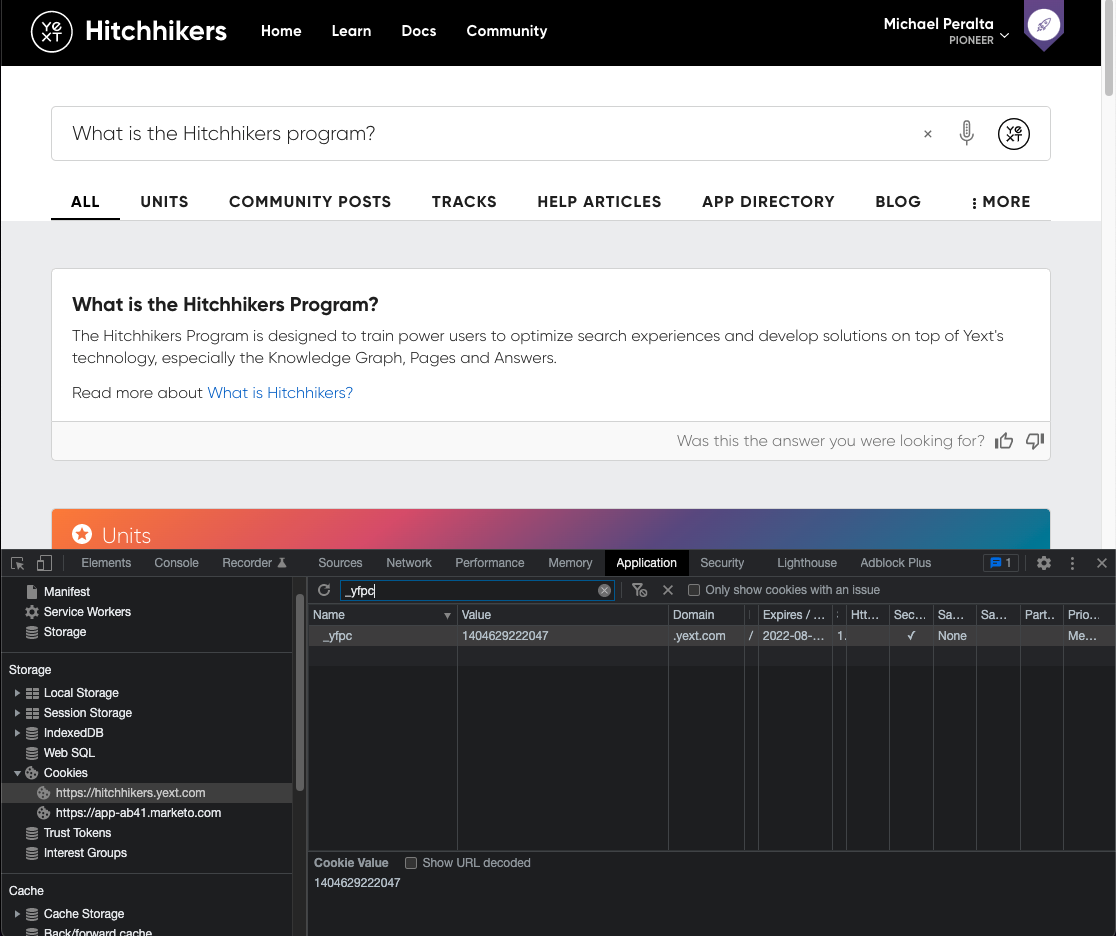Step 1: Identifying Your Visitors
In order to track what individual visitors are searching for and engaging with on your search experience, you first need to be able to uniquely identify them.
There are a few common ways to identify who is visiting your search experience:
- With a Yext cookie
- With your own visitor ID
With Yext Cookie
When using Yext’s tag-based conversion tracking, a first party cookie called _yfpc is automatically generated for you and used to link clicks with any conversions which may have occurred.

You can use this same cookie for identifying visitors outside of conversion tracking if you don’t already have your own method for doing so.
You can learn more about how to retrieve an ID from a cookie here .
With Your Own ID
Oftentimes you will already have your own way of identifying a visitor whether that’s based on a cookie, user email address, or some other unique identifier you may have.
If this is the case, you can use this ID as your visitor ID assuming it’s available to your search experience at runtime e.g., when a search or click is being made.
You can learn more about how to generate a cookie and retrieve a visitor from a cookie here .
You can learn more about how to store data in local storage and retrieve a visitor from local storage here .

